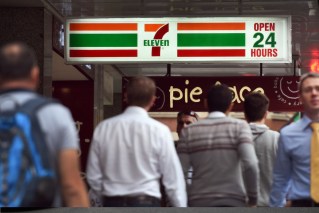Surprise inflation data an ‘early Xmas present’ for households

Australian households have been delivered and “early Christmas present” with some surprising monthly inflation figures that appear likely to put the brakes on rate rises next week.
The monthly consumer price index rose 4.9 per cent in the 12 months to October, undershooting expectations and down from the 5.6 per cent increase in September.
Expectations were for a 5.2 per cent annual lift through to October in the Australian Bureau of Statistics monthly report on inflation.
Housing, food and non-alcoholic beverages, and transport were the biggest contributors to the annual growth.
“The lower-than-expected October print is an early Christmas present for households and businesses,” Moody’s Analytics economist Harry Murphy Cruise said on Wednesday.
“Combined with the monthly fall in retail sales through October, it is clear that higher interest rates are quelling demand and – by extension –inflation. That should be enough to save the Reserve Bank board from having to be the Grinch of Christmas when it meets next week.”
The latest inflation data followed a weaker-than-expected retail data report for October, with sales down 0.2 per cent over the month.
Acting ABS head of prices statistics Leigh Merrington said CPI had also softened when volatile items such as automotive fuel, fruit and vegetables and holiday travel were stripped out.
“When excluding these volatile items from the monthly CPI indicator, the annual rise in October is 5.1 per cent, lower than the annual rise of 5.5 per cent in September,” Merrington said.
Murphy Cruise said measures of underlying inflation – without those volatile items – had fallen to their lowest readings since early last year.
“For a cherry on top, rent prices rose 6.6 per cent year-on-year after climbing 7.6 per cent in September; yes, that is still far too much, but any easing is good,” he said.
“Still, we should be cautious. Easing rent hikes came largely from an increase in Commonwealth Rent Assistance. Without that support, rents would have jumped 8.3 per cent year-on-year.
“Similarly, government rebates are keeping a lid on electricity price hikes. Excluding that support, electricity prices would have rocketed 18.8 per cent.”
But he said it was hard to find bad news in Wednesday’s inflation data.
EY chief economist Cherelle Murphy also welcomed the latest figures – although she was more cautious.
It’s clear the 13 rate hikes that have taken the cash rate from 0.1 per cent to 4.35 per cent, are working. What is less clear, is whether inflation is falling fast enough,” she said.
“Today’s data confirms Governor Michele Bullock’s comments last week that inflation has enough of a home-grown element that more rate hikes would be effective in bringing it down, if required.”
Murphy said it was likely the Reserve Bank will leave the 4.35 per cent cash rate on hold when the board meets next week.
The monthly consumer index is not as comprehensive as the quarterly update and the October edition was skewed towards price changes across goods.
However, it will still contain kernels of information for the Reserve Bank as it monitors price pressures in Australia.
– with AAP








